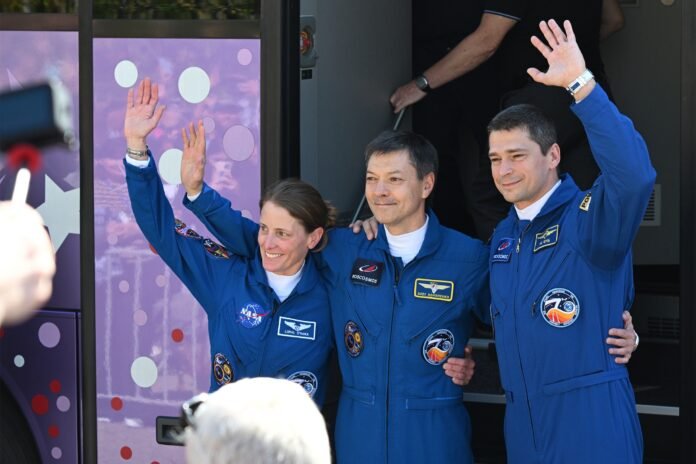On Friday, September 15 at 18:44:36, the Soyuz MS-24 spacecraft with an international crew left the Baikonur Cosmodrome for the ISS. Two Russians fly: the deputy director of the Central Training Center that bears his name. Yu.A. Gagarin, the commander of the Roscosmos cosmonaut corps, Oleg Kononenko and Nikolai Chub, as well as the American Laurel O’Hara. O’Hare will return to Earth in spring 2024 on Soyuz MS-24, and Kononenko and Chub’s mission will last an entire year, until September 2024.
Docking with the ISS is scheduled for 21:56 Moscow time. That is, the flight will be carried out in an ultra-short two-orbit scheme, in just 3 hours and 12 minutes. Let us remember that until recently the traditional two-day scheme was when the ship circled the Earth 34 times. A four-lap circuit is also used, which lasts about six hours. The flight speed record in a two-orbit pattern (three hours) was set by Soyuz MS-17 on October 14, 2020: 3 hours and 3 minutes.
For the Hero of Russia Oleg Kononenko, this is already the fifth flight: his space luggage includes 736 days, 18 hours and 43 minutes in zero gravity. They will be joined by another 375. Thus Kononenko could become the first person on Earth to remain in space for more than a thousand days. Nikolai Chub and Loral O’Hara fly for the first time.
As Oleg Kononenko said at the pre-flight press conference, the “shift change” on board the ISS will last 12 days. Overall, there is still a lot of work to do. According to the Russian program, four spacewalks and work with cargo ships will be carried out during long-duration expeditions 70 and 71. During this time, four Progress MS are expected to arrive. More than 60 experiments will be performed, including seven new ones.
Perhaps one of the most interesting is the in-orbit bioprinting experiment. It is designed to produce structures from synthetic materials and biological components using 4D bioprinting. Oleg Kononenko was preparing for it. As experts state, when carrying out this type of study on Earth, the properties of the resulting samples do not correspond to the expected results. For example, when forming the internal cavity of a protein plate in laboratory conditions, its layers are arranged unevenly. This makes it difficult to further apply the results of the work. Therefore, it was decided to perform the experiment in microgravity conditions to obtain more advanced properties of the components.
In general, an annual flight is very complicated. The longest space flight in history was made by Russian Valery Polyakov from January 1994 to March 1995 in the Mir orbital complex: 437 days 17 hours 58 minutes 17 seconds. Then comes Sergei Avdeev: 379 days 14 hours 51 minutes 10 seconds from August 1998 to August 1999, as well as cosmonauts Vladimir Titov and Musa Manarov: 365 days 22 hours 38 minutes 38 seconds from December 1987 to December 1988. All These flights were also made to the Mir orbital station.
Petr Dubrov recently worked on the ISS for 355 days. And in the near future, Russians Sergei Prokopyev and Dmitry Petelin, as well as American Frank Rubio, who will spend 371 days in orbit, should return to Earth.
By the way
It was Oleg Kononenko who was the first to print a living organ in space on a bioprinter – the thyroid gland of a mouse. What are the “stellar” prospects for this technology? This is what the Hero of Russia cosmonaut said earlier in an interview with RG:
– During the first session of the experiment, which I carried out in December 2018, a tissue structure of human cartilage (chondrospheres) and the rat thyroid gland was obtained from animal thyroid cells. Speaking in strictly scientific language, for the first time in the world formative biofabrication of tissue-engineered structures was successfully carried out under conditions of weightlessness using the magnetic levitation assembly method. The research has an undeniable global priority for Russia, since until now no one had carried out similar research in zero gravity conditions.
The practical application of this technology is the study of cosmic radiation. Cosmic radiation negatively affects the human body, especially when it flies outside the Earth’s protective magnetosphere. Bioprinting technology makes it possible to create so-called sentinel organs, sensitive to radiation, as models to study the effects of radiation. This knowledge will be needed when carrying out long-distance flights, when planning the construction of lunar bases and when creating planetary settlements.

